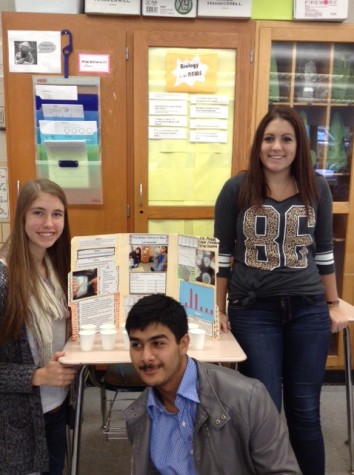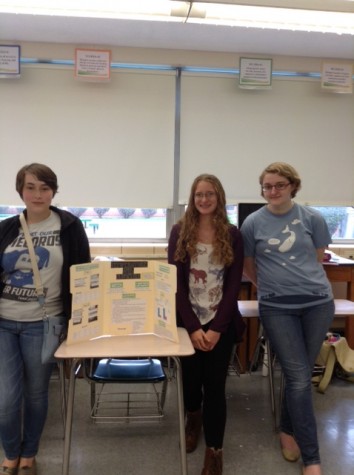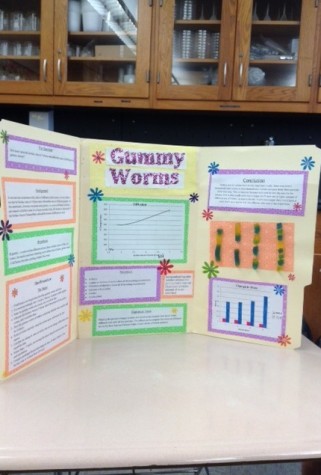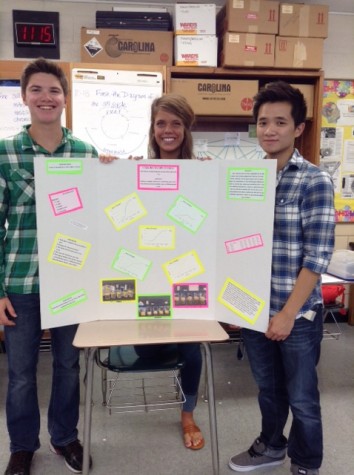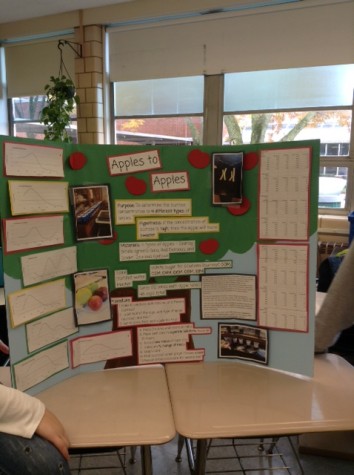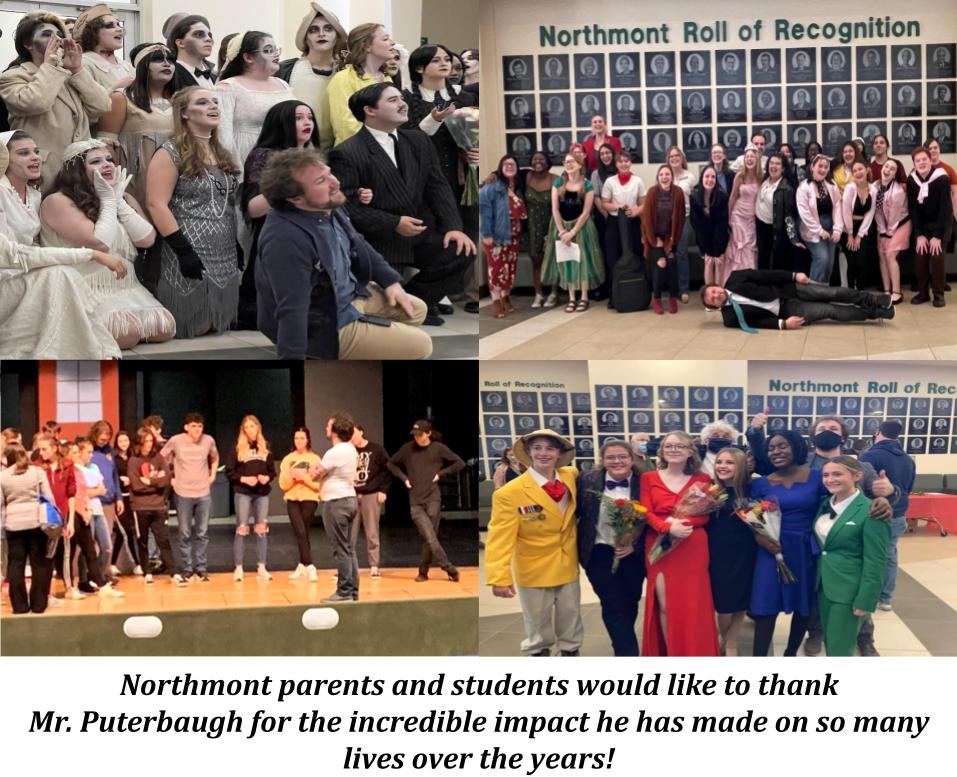A Day at the Fair
AP Bio puts on their own science fair
October 30, 2014
Ms. Chrissy Brown’s fourth period AP Biology class set up a science fair in room 108 on Wednesday, October 15. The experiments were all diverse, ranging from which apples are the sweetest to if temperature affects osmosis.
Seniors Eva Stebel and Virpal Cheema, along with junior Logan Swafford had decided to find the best-tasting lemonade, having their classmates and teachers try lemonade with different amounts of sugars. The result, more sour than sweet, was delicious.
Juniors Emily Hamant and Meghan Jenkins, along with senior Lydia McGovern test whether or not temperature effects osmosis.
“We tested temperature and osmosis, and osmosis is how water moves through the cell membrane,” said Jenkins. “We thought that temperature would make diffusion happen faster.”
They hypothesized a warmer temperature would speed up osmosis, and found that temperature does impact osmosis.
Junior Eve Henne and seniors Austin Reaves, Jacob Winchester, and Evan Wells investigated the effects of the surface area-to-volume ratio on diffusion of gummy worms.
“We took gummy worms and cut them into different pieces,” said Winchester. “We had a whole one, halves, quarters, and eighths. Then we tested to see if the surface area to volume ratio would impact how much water they would collect. Then we took the gummy worms, placed them in cups of distilled water overnight, and came back the next day and measured the masses. What we found out is that the worm with the highest surface area to volume ratio held more water.”
Seniors Jordan Hellmund, Kristen Pullins, and Kevin Tran tested cell recovery in eggs.
“To start, we picked five eggs and put them in vinegar for twenty four hours,” said Pullins. “After the shell dissolved, we took the mass and put them in corn syrup for twenty four hours. We took the mass and put them in distilled water. The eggs were able to regain their mass in twenty four hours, and after twenty four hours, they continued to gain more mass than they had before.”
They discovered that not only do the eggs regain their mass, they also exceed their previous mass.
Seniors Hannah Hapner, Alex Morgan, Tori Amos and Megan Sloboda determined which apple is sweetest out of Granny Smith, Gala, Red Delicious, and Yellow Delicious.
“We were trying to figure out the concentration of sucrose in different types of apples,” said Hapner. “We found the initial mass, and then we took the cores of them and put them all in separate solutions and put them in for twenty four hours and we found the final mass, and the percent change of the initial and final masses. We were trying to test if sour apples like Granny Delicious had less sucrose than sweeter apples.”
Their hypothesis was that apples with higher sucrose concentration would be sweeter. Though the trial with the Red Delicious was inconclusive, their hypothesis was still proven correct, since the sour Granny Smith had less sucrose concentration than the sweeter Yellow Delicious.
The science fair was a major success and very informative. Everyone who came in walked out learning something new.


